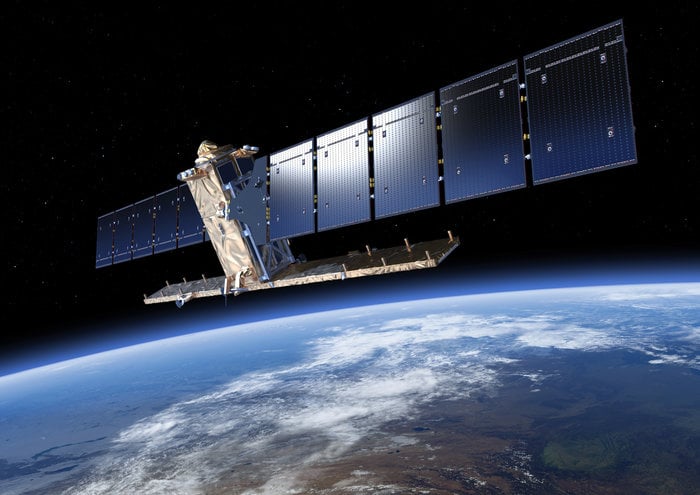Glaciologists have been closely monitoring ice shelves in Antarctica for signs of cracks and chasms that indicate breakups. The loss of ice around the Earth's polar regions is one of many consequences of climate change, which is leading to rising ocean levels and various feedback mechanisms. Recently, the ESA's *Copernicus Sentinel-1* satellite witnessed a giant iceberg breaking off from Antarctica's Brunt Ice Shelf on February 26th.
The *Copernicus Sentinel* mission consists of two polar-orbiting satellites that rely on C-band synthetic aperture radar imaging to conduct Earth observations in all weather conditions. In recent years, it has been monitoring the Brunt Ice Shelf for signs of cracks and chasms. According to the images it recently captured, an iceberg larger than New York City broke free and began floating out to sea.
The isosceles-shaped iceberg (designed A-74), which measures about 1270 km2(490 mi2), broke away from a region located north of the McDonald Ice Rumples, which is part of the larger Brunt Ice Shelf that borders the Weddell Sea in northwest Antarctica. While not particularly giant by Antarctic standards, it is the largest iceberg to break off from the Brunt Ice Shelf to date.
In accordance with naming conventions, icebergs are initially designated based on the Antarctic quadrant in which they were originally sighted, a sequential number, and (in the event it breaks off) a sequential letter. A number of cracks and chasms have been forming in this 150 meter-thick (490 feet) sheet in recent years, the most recent of which was spotted in 2019.
This crack was observed extending towards another further north, near the Stancomb-Wills Glacier Tongue. Together, these cracks formed a cut across the ice shelf, which prompted the ESA to begin monitoring it closely via satellite. These observations allowed Sentinel-1 to obtain ice surface velocity measurements, which indicated that the section north of the new crack was moving around 5 m (16.5 ft) per day, making it the most unstable.
In the early morning hours on Friday, Feb. 26th, the satellites witnessed the newer crack widen rapidly and eventually break free from the rest of the ice shelf. As Mark Drinkwater, a researcher with the ESA's Earth Observation Programs, explained in an ESA press release:
"Although the calving of the new berg was expected and forecasted some weeks ago, watching such remote events unfold is still captivating. Over the following weeks and months, the iceberg could be entrained in the swift south-westerly flowing coastal current, run aground or cause further damage by bumping into the southern Brunt Ice Shelf. So we will be carefully monitoring the situation using data provided by the Copernicus Sentinel-1 mission."
Fortunately, this breakup will not pose a threat to the Halley VI Research Station, which was repositioned further inland in 2017 after the ice sheet was deemed unsafe. This platform is part of the British Antarctic Survey, which takes advantage of the local climate-sensitive zone to conduct global Earth, atmospheric, and space weather observations.
Routine monitoring with satellites is an important part of Earth science and observation because of the way they offer unprecedented views of remote regions, like Antarctica. Of particular importance is how ice shelves manage to retain their structural integrity in response to changes in atmospheric and ocean temperatures. Sentinel and other satellites are also responsible for tracking icebergs after they float out to sea.
The radar-imaging capabilities of *Copernicus Sentinel* make it useful because it can acquire images day or night and year-round, which is especially important during the austral winter months. A-74, which is still waiting on a proper name, is just the latest iceberg to break off from Antarctica, and the largest to date.
As an indicator of climate change, it illustrates how the problem is escalating and will become more pronounced in the coming years.
Further Reading: ESA
 Universe Today
Universe Today


